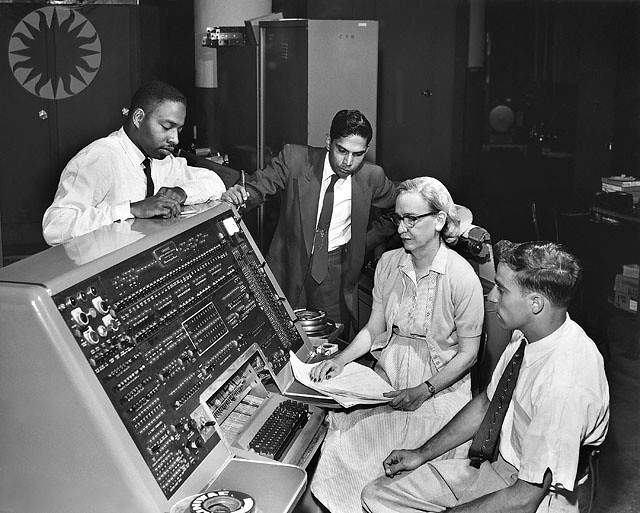There are many thought provoking annotations in our course this week, but it was @sarahmcole’s post in our course Slack off-topic channel that stuck with me the most. She called out how the lack of availability of computers to women affected their decisions to complete degrees in computer science, according to a documentary she cited.[1] This resulted in a striking decline in participation by women starting in 1984, in sharp contrast to other types of degrees. The National Public Radio podcast she found describes this history and makes points I had not considered before, despite having lived though this time during high school.
My family bought the computer mentioned in podcast, the RadioShack / TRS-80 Color Computer 1, in 1983. I have a younger sister and brother, and while the computer was in various common rooms, it did become more mine. I was on it a lot. My younger sister Janelle used the computer and worked through exercises in the book “Programming with Extended Color BASIC.” but didn’t get access to it nearly as much as I did and stopped using it after the first summer we had it. Janelle now works as a detective in internet crime for the Toronto Police force and lectures and trains other police forces on technology internationally, but did not take computer science in university.

Figure 1, TRS-80 Color Computer 1 with a BASIC program.[2]
In my high school computer classes in 1984, I remember it seemed that the people who were the most proficient with computer programming were male. While as a group we weren’t particularly smart (judging by achievement in other classes), we all had computers at home, the same advantage mentioned in the podcast. Today my daughter has her own computer, but has faced male majority/male dominated computer programming courses in high school where she has at times felt uncomfortable. Two years in a row her class debated the École Polytechnique massacre of 1989. My daughter thought this was counter to encouraging women to continue in computer science.
I asked my wife Christine Blackadar about her experience. Her family purchased a Commodore 64 in 1983 and she remembers that she and her younger brother were so excited about a game called Blue Max that they typed in the machine code for another game from a magazine article. (It didn’t work.) Christine’s experience taking computer courses in high school resembled what I had seen. There were not enough computers to go around and in a male majority class she ended up with a male partner who she described as “not scary, just very off-putting.” Her partner got much more time on the shared computer and he frequently rushed Christine to finish her work. She said the male students in her class formed a group that the male teacher catered to. Although Christine did not go on to study computer programming in university, she did become a software developer in the late 1990’s. Ultimately she chose to change careers and become a teacher. One of the things she loved during her career was to teach computer skills to her students.
Many of the pioneers of computer programming were women. My favourite is United States Navy Rear Admiral Grace Hopper. Among other achievements she is a co-developer of COBOL, a computer language still used where I work. If you use a bank, it is likely some of your financial transactions are still processed with this language. It is interesting to mark the close proximity of two events, in the NPR Podcast referenced above, 1984 was the inflection point when women’s participation rate in computer science started to decline. 1986 marked the final retirement of Grace Hopper from the United States Navy.

Figure 2, Grace Hopper and UNIVAC.[3]
- Planet Money, “Episode 576: When Women Stopped Coding,” aired October 2014, National Public Radio podcast, 17:13, posted July 22, 2016, http://www.npr.org/sections/money/2016/07/22/487069271/episode-576-when-women-stopped-coding. Retrieved 15 July 2017. ↩
- Gilles Douaire, “TRS-80” photograph (2013), Flickr, https://www.flickr.com. Retrieved 15 July 2017. ↩
- Smithonian Institution, “Grace Hopper and UNIVAC” photograph (c.1960), Flickr, https://www.flickr.com. Retrieved 15 July 2017. ↩
Completed for HIST3814o Module 1, Exercise 1.
This was composed in Dillinger.io as markdown and then exported as html.